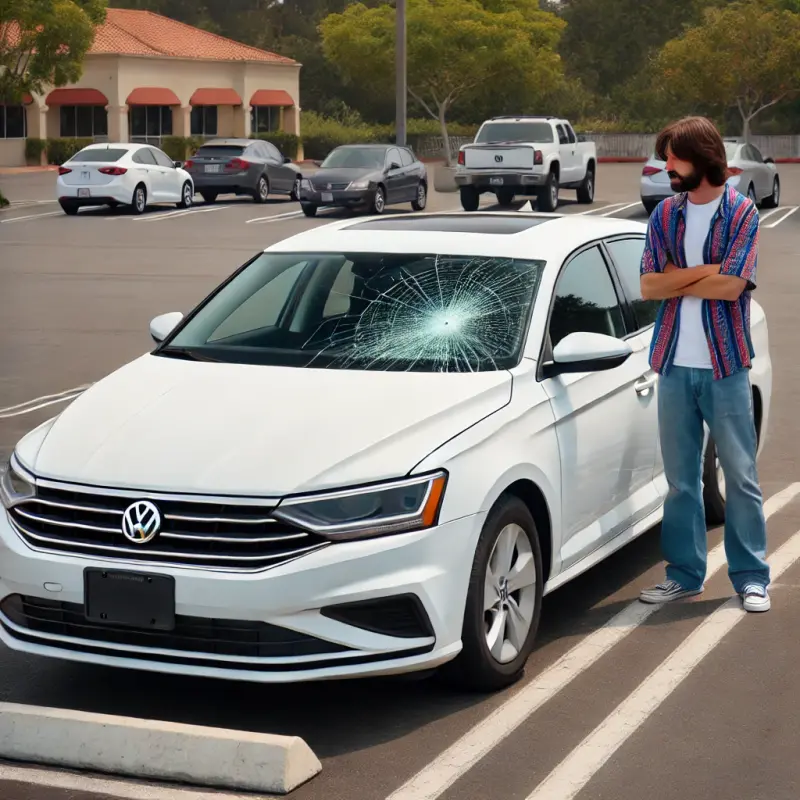When it comes to auto glass replacement, the topic of Original Equipment Manufacturer (OEM) versus aftermarket glass can spark quite a debate among car owners and enthusiasts alike. Each option has its own set of advantages and disadvantages, and choosing the right one for your vehicle can significantly impact not only your wallet but also your safety on the road. In this article, we'll delve into the myriad benefits of using OEM glass versus aftermarket options for windshield replacements and other auto glass repairs.
Understanding Auto Glass Replacement: An Overview
Auto glass replacement involves replacing damaged or broken glass components in a vehicle, typically including windshields, side windows, and rear windows. Whether due to an unfortunate accident or environmental factors such as hail or debris on the road, damaged auto glass is a common issue that needs addressing promptly.
What is OEM Glass?
Original Equipment Manufacturer (OEM) glass refers to the glass that is made by the same manufacturer that produced the original components for your vehicle at the time of assembly. This means that if you drive a Honda Civic, OEM parts would come from Honda itself or its authorized suppliers, ensuring compatibility and quality.
What is Aftermarket Glass?
In contrast, aftermarket glass is produced by third-party manufacturers who may not have any affiliation with your vehicle's original manufacturer. While some aftermarket products can be high-quality alternatives, others may fall short in terms of fit and finish.
The Benefits of Using OEM vs Aftermarket Glass for Replacements
When deciding between OEM and aftermarket options for windshield replacements, it's crucial to understand what each offers. Let's break down their respective pros and cons.
Quality Assurance with OEM Glass
One significant advantage of choosing OEM parts is quality assurance. Since these components are made specifically for your vehicle model:
- They adhere to strict manufacturing standards. You can expect better clarity and durability. They are often backed by warranties.
Potential Cost Savings with Aftermarket Glass
On the flip side, aftermarket glass can sometimes be more budget-friendly. Here’s why some car owners consider it:
- Lower costs mean less financial strain. Availability in various types and styles. Potentially faster service times due to wider availability.
Safety Considerations in Windshield Replacement
When it comes to auto glass replacement, safety should always be your top priority. Here’s where OEM shines:
- Designed to meet stringent safety regulations. Tested to withstand impacts similar to those faced during operation.
Aftermarket options may not consistently offer the same level of safety compliance across all manufacturers.
Impact Resistance: A Key Factor
Windshields play a vital role in protecting passengers during a collision. The design and materials used in OEM windshields often provide enhanced impact resistance compared to some aftermarket alternatives.
Longevity: How Long Will Your Replacement Last?
Another essential consideration when weighing OEM vs aftermarket options is longevity:
- OEM Glass: Typically lasts longer due to high-quality materials. Aftermarket Glass: May lack long-term durability; some cheaper options might degrade faster under UV exposure or temperature fluctuations.
Fitment: The Importance of Precision in Installation
An improperly fitted windshield can lead to several issues such as leaks or even airbag malfunctions during accidents. With OEM parts:
- Exact specifications ensure proper fitment.
Conversely, aftermarket products may require additional adjustments during installation.

Warranty Coverage: What Should You Expect?
Warranties vary widely between both options:
- OEM Windshield Replacement: Often comes with robust warranty coverage that protects against defects. Aftermarket Options: Warranty conditions vary; some may include limited coverage while others might not offer any at all.
Aesthetic Appeal: Keeping Your Vehicle Looking Good
The appearance of your vehicle matters just as much as functional aspects do. Here’s how both options measure up:
OEM Glass: Matches factory specifications perfectly; maintains aesthetic integrity. Aftermarket Options: Some alternatives may not match exact tinting or curvature; potential aesthetic compromise.Installation Process: Who Does It Better?
Whether you're opting for an aftermarket solution or sticking with OEM parts, professional installation plays a crucial role in performance outcomes:
- Choose certified technicians familiar with both types of products.
Time Efficiency During Installation
Generally speaking, most certified technicians will have experience installing both types of windshields efficiently; however, certain complexities could arise with aftermarket installations based on fitment discrepancies.
Environmental Impact: Which Option Is Greener?
In today’s eco-conscious world, many car owners are considering the environmental footprint of their choices:
OEM Glass: Typically produced in adherence to stricter environmental regulations. Aftermarket Variants: Environmental impact varies depending on manufacturing practices—some might use recycled materials while others do not.Legal Considerations Surrounding Auto Glass Replacement
Different regions have specific legal requirements about auto glass standards which could affect your choice:
Ensure compliance with local laws regarding windshield tinting levels—OEM generally adheres closely while some aftermarket brands might not comply.
Check if insurance covers either option; many policies favor OEM replacements due to higher reliability standards.
Consumer Preferences: What Do Car Owners Think?
Surveys show varied preferences among car owners when selecting between these two categories—while cost is often a deciding factor for many individuals seeking affordable solutions like aftermarket products;
Consumer Trust Factors Include:
Brand reputation Previous experiences Recommendations from trusted sourcesCost Analysis: Breaking Down Expenses For Each Option
When diving deep into expenses associated with each type of replacement option:
| Category | Average Cost (USD) | |------------------------|---------------------| | OEM Windshield | $300 - $600 | | Aftermarket Windshield | $150 - $400 |
This table illustrates how prices can vary significantly depending on brand reputability along with installation fees attached accordingly!

FAQ Section
1. What should I choose for my windshield replacement—OEM or aftermarket?
Answer: It depends on your priorities! If you want guaranteed quality and safety compliance, go for OEM; if you're looking for budget-friendly alternatives without compromising too much on performance—consider reputable aftermarket brands instead!
2. Will using an aftermarket windshield void my warranty?
Answer: It can! Always check your vehicle's warranty policy before making decisions about non-OEM replacements as it might affect coverage eligibility depending upon manufacturer stipulations!
Raleigh Auto Glass3. How long does it take to replace a windshield?
Answer: Generally speaking—from removal through installation—it takes approximately 1–3 hours depending upon technician expertise & complexity involved with fitting either type!
4. Can I install my own windshield?
Answer: While DIY installations are possible—they’re risky! A professional knows precisely how best ensure seals hold tight enough while adhering safely within specified parameters needed by law!
5. Is there any risk associated with using low-cost aftermarket windshields?
Answer: Yes indeed! Poor-quality materials could result in decreased visibility over time alongside potential structural integrity concerns which undermine overall effectiveness during collisions!
6 What kind of warranty should I look out for when choosing either option?
Answer: Look closely at duration offered along side conditions specified within documentation provided—ideally warranties covering defects beyond mere surface scratches indicate higher confidence levels from manufacturers involved!
Conclusion
In conclusion, navigating through the intricate world of auto glass replacement requires careful consideration between OEM and aftermarket choices tailored towards individual needs & values held dear by drivers today! Ultimately prioritizing safety concerns alongside budgetary constraints remains paramount when making informed decisions surrounding this critical aspect related directly back onto our vehicles' performance overall against unforeseen challenges lurking ahead down life’s winding roads! Whether you decide upon opting towards Original Equipment Manufacturer recommendations ensuring utmost quality throughout every journey taken—or explore alternative avenues exploring third-party offerings available today—we hope this comprehensive guide sheds light upon intricacies encapsulated within “The Benefits Of Using Oem Vs Aftermarket Glass For Replacements"!